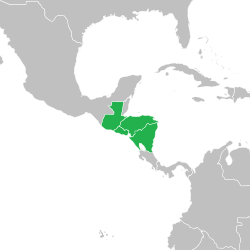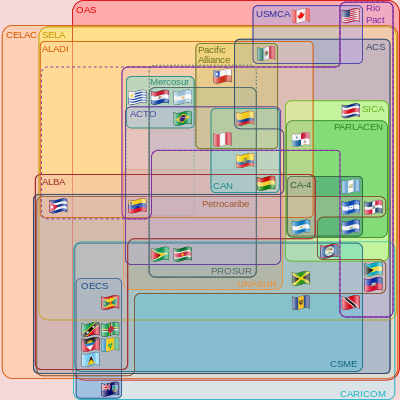

The Central America-4 Free Mobility Agreement (CA-4; Spanish: Convenio Centroamericano de libre movilidad) is a treaty signed in June 2006 between the Central American nations of El Salvador, Guatemala, Honduras, and Nicaragua, establishing the free movement across borders between the four signatory states of their citizens without any restrictions or checks. Foreign nationals who enter one of the signatory countries can also travel to other signatory states by land (but not by air) without having to obtain additional permits or to undergo checks at border checkpoints. Similar to the Schengen Agreement in Europe, the CA-4 Agreement establishes a harmonized visa regime for nationals travelling to the area.[1]
See also
[edit]- Central America-4 passport
- Visa policy of El Salvador
- Visa policy of Guatemala
- Visa policy of Honduras
- Visa policy of Nicaragua
References
[edit]- ^ "ACUERDO REGIONAL DE PROCEDIMIENTOS MIGRATORIOS CA 4" (PDF). reddhmigrantes.files.wordpress.com. 2014. Retrieved 2019-09-17.
Well, that’s interesting to know that Psilotum nudum are known as whisk ferns. Psilotum nudum is the commoner species of the two. While the P. flaccidum is a rare species and is found in the tropical islands. Both the species are usually epiphytic in habit and grow upon tree ferns. These species may also be terrestrial and grow in humus or in the crevices of the rocks.
View the detailed Guide of Psilotum nudum: Detailed Study Of Psilotum Nudum (Whisk Fern), Classification, Anatomy, Reproduction